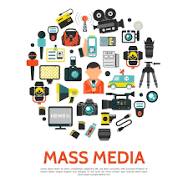ECONOMIC SYSTEMS
Introduction
We have already studied that the basic economic problem revolves around how societies can use their scarce resources to satisfy their unlimited wants. With such a situation of scarce resources, decisions or choices must be made as to:
These basic economic problems are for every society to solve. Societies have put in place certain systems in order to solve these problems. The particular system put in place by society to solve these problems is what we refer to as an economic system. By an economic system therefore, we mean the rules, laws and regulations that govern the production, exchange and consumption of goods and services in a country. We can therefore define economic system as the social framework of how an economy’s resources are owned, managed and controlled by private individuals, government or both in the production of goods and services to satisfy human wants. It also refers to the set of norms, customs, rules, laws and regulations that govern production, exchange and consumption of goods and services in a country. In simple terms, the particular way in which economic activity as a whole takes place is called the economic system. The individual, firm and government form the important components of an economic system.
Since we have different societies using varied methods of solving these problems, we can talk of different types of economic systems.
Types of Economic Systems
Basically, there are three main types of economic systems vis:-
Market/Capitalist Economic System
This is an economic system where there is private ownership and control of productive resources and very little government intervention. Under this system, the choices of society are made by the free inter-play of market forces or the price mechanism. In capitalist economies, the main driving force is profit maximization for producers whilst consumers also aim at maximizing their satisfaction.
This is also known as the laissez-faire or free enterprise system. Its main features/characteristics are:
In the market system, there is no or little government interference in the working of the economy. The price mechanism is its main features, prices of goods and services being determined by the demands made by the consumers and by the willingness of producers to supply these goods and services.
In the market economy, resources are owned by individuals, not by the state. The various factors of production are again dependent on the workings of the price mechanism. In the market economy, emphasis is laid on the freedom of the individual, both as a consumer and as the owner of resources.
These economies depend on the price mechanism allocation of resources is based on the free movement of prices. Prices perform two main functions. First, decision made by buyers and sellers are coordinated and made consistent with each other by movement in prices. Second, prices act as incentive for, on the part of producers, and a rationing device among consumers.
Freedom of entry and exit. This implies that there are no barriers to entry into any occupation or productive activity. There is competition among producers or sellers. There is freedom of entry into any market to sell and freedom to leave the market.
Many buyers and sellers. This implies that an individual buyer or seller has no influence on the market price. Both buyers and sellers are price takers. There are many sellers and buyers, each too small to influence the market price.
The main motive for production is profit. Entrepreneurs aim to make as much profit as possible.
Advantages
Disadvantages



No comments yet
Be the first to share your thoughts!